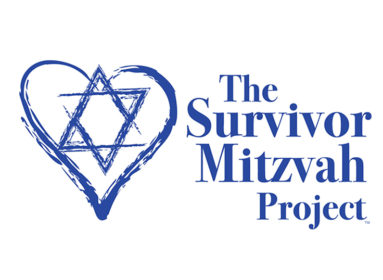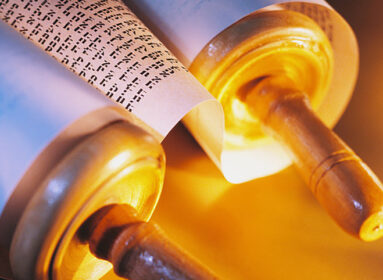
By Shlomo Riskin
“Speak unto Aaron, and say unto him: when you light the lamps, the seven lamps shall give light in front of the menorah” (Num. 8:2).
Our Torah portion opens with the kindling of the seven lights of the branches of the menorah, specifically ordaining that it be kindled by the kohen- priests and that it be beaten of gold, in one piece, from “its stem until its flower” (Num. 8:4).
At first glance, it would seem that this biblical segment is misplaced; its more natural setting would have been the portions of Truma or Tetzaveh in the Book of Exodus, which deal with the Sanctuary, its sacred accoutrements and the task of the kohen-priests in ministering within it. Why revisit the menorah here, in the Book of Numbers?
The classical commentary by Rashi attempts to provide a response: “Why link this segment of the menorah to the segment of the tribal princes (which concludes the previous Torah portion)? Because when Aaron saw the offerings of the princes (at the dedication of the Sanctuary), he felt ill at ease that he was not included with them in the offerings, neither he nor his tribe. The Holy One, Blessed be He, said to him, ‘By your life, your contribution is greater than theirs; you kindle and prepare the lights’” (Rashi, Num. 8:2).
Since when is cleaning and kindling a candelabrum a greater honor than participating in the opening ceremony of the Sanctuary? To penetrate the significance of Rashi’s words we first need to understand the significance of the menorah. At first blush, the lights of the menorah symbolize Torah: “For the commandment is a candle, and Torah is light,” teaches the psalmist. But the ark (aron kodesh) is the repository of the Tablets of Stone, and that is what represents Torah in the Sanctuary.
Moreover, the menorah has a stem, or trunk, and six branches which emanate from it, each with its respective flowers – together making seven lights. And the “goblets” on the branches are “almond-shaped” (meshukadim, cf. Ex. 25:33) reminiscent of the almond tree, the first tree to blossom and thus the herald of spring. The imagery is certainly that of a tree. If the Sanctuary symbolizes a world in which the Almighty dwells—“And they shall make for me a Sanctuary so that I may dwell among them,” a world of perfection manifesting the Divine Presence and its consummate goodness and compassion—then the Sanctuary symbolizes a return to Eden, to universal peace and harmony.
If so, the menorah may well represent the Tree of Life—after all, Torah is aptly called “a tree of life to all who grasp it”—or perhaps a tree of knowledge, especially since the ancient Greek tradition speaks of “the seven branches of wisdom,” paralleling the seven branches of the menorah (including the central stem). One may even suggest that the menorah is the amalgam of both trees together: Torah and wisdom united in one substance of beaten gold, a tree of life-giving and life-enhancing learning when the light of Torah illumines every branch of worldly wisdom.
This fundamental unity encompassing Torah and all genuine branches of wisdom was recognized clearly by the Sages of the Talmud. From their viewpoint, all true knowledge would certainly lead to the greatest truth of all, the existence of the Creator of the Universe.
Hence the Talmud declares: “Rabbi Shimon ben Pazi said in the name of Rabbi Yehoshua ben Levi in the name of bar Kappara: ‘Anyone who has the ability to understand astronomy/astrology [the major science of Babylon] and does not do so, of him does the Scripture say, ‘Upon the words of the Lord they do not gaze and upon the deeds of His hands they do not look’” (B.T. Shabbat 75a). The Sages are saying that one cannot begin to properly appreciate the world without a grounding in the sciences.
Maimonides also understood the crucial inter-relationship between what is generally regarded as secular wisdom and Torah. He begins his halakhic magnum opus Mishne Torah with the Laws of Torah Fundamentals, which includes cosmogony, philosophy and science. He concludes the fourth chapter in saying that these studies are necessary for anyone desirous of learning about God, the command to love, know and revere God. Most amazing of all, Maimonides ordains that the scholar must divide his learning time into three segments: one third for the Written Torah, one third for the Oral Torah, and one third for Gemara: and Gemara includes extracting new laws, as well as science and philosophy! Apparently an advanced yeshiva led by Maimonides would include in its curriculum the study of science and philosophy as a means of understanding the world, human nature and God.
If indeed the menorah represents knowledge in its broadest sense, enlightenment in terms of the seven branches of wisdom, the tree of knowledge, then the duty of the kohen-priest becomes clear. All of knowledge, indeed the entire world, may be seen as “matter”; Torah must give “form,” direction and meaning to every aspect of the material world and the life which it breeds. The kohen, who is mandated to “teach the Torah laws to Israel,” must prepare, clean and purify the lights of the menorah. This is the highest task of Torah and the greatest calling of the kohanim: to utilize all branches of knowledge to bring us closer to the God of love, morality and peace.
Rabbi Shlomo Riskin is chancellor of Ohr Torah Stone and chief rabbi of Efrat, Israel.








 Southern New England Jewish Ledger
Southern New England Jewish Ledger









